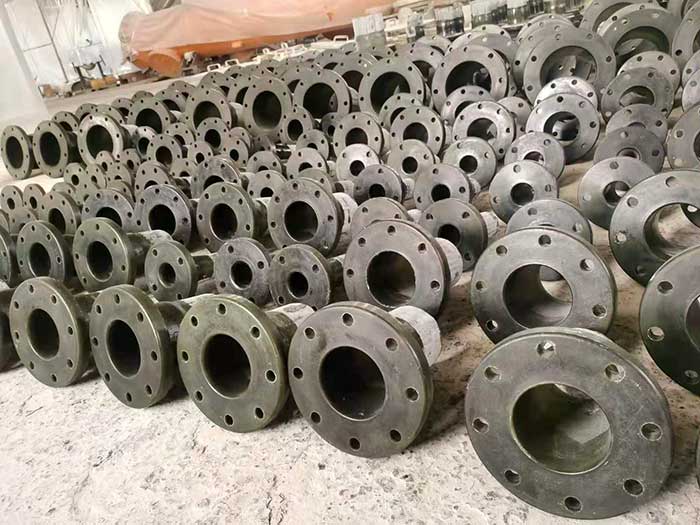Fiberglass reinforced plastic (FRP) flange is a type of pipe connection component made from fiberglass reinforced plastic, widely used in industries such as chemical, petroleum, pharmaceutical, food, maritime, and power. It boasts excellent corrosion
Fiberglass reinforced plastic (FRP) flange is a type of pipe connection component made from fiberglass reinforced plastic, widely used in industries such as chemical, petroleum, pharmaceutical, food, maritime, and power. It boasts excellent corrosion resistance, suitable for transporting various mediums. FRP flanges come in various nominal diameters such as 10mm, 15mm, 20mm, 25mm, 32mm, etc., to meet different pipeline connection requirements.

1. Excellent corrosion resistance, capable of withstanding corrosion from various acids, alkalis, salts, organic solvents, etc., making FRP flanges widely used in chemical, petroleum, and power industries.
2. Lightweight and high strength, with a lighter weight yet higher strength, facilitating handling and installation in engineering construction, and effectively reducing transportation costs.
3. Good physical and mechanical properties, including wear resistance, high temperature resistance, and aging resistance, leading to a long service life and low maintenance costs.
4. Wide application areas, extensively used in industries such as chemical, papermaking, water supply, and wastewater treatment.
The specifications of FRP flanges cover a production range from DN50 to 4000mm. Additionally, there are specific product models such as 15A-300A, and different pressure levels including 0.6Mpa, 1.0MPa, 1.6MPa, etc.
In terms of national standards, the model of FRP flanges usually consists of DN size and PN level, for example, DN25-PN16, where DN represents the size of the connecting pipeline and PN represents the pressure level the flange connection can withstand. Depending on the nominal pressure, FRP flanges can be classified into PN10, PN16, PN25, etc.
The production process of FRP flanges mainly includes material preparation, preparation of SMC sheet, and thermoforming. During the manufacturing process, reinforcement is achieved using winding yarn, felt layers, and cloth layers to achieve the required thickness and strength. Additionally, the production, inspection, and acceptance of FRP flanges adhere to the standard HG/T21633-1991 "Fiberglass Reinforced Plastic Pipes and Pipe Fittings".
Understanding the price of FRP flanges is crucial when selecting them. The price factors of FRP flanges include material costs, processing fees, transportation costs, etc. In recent years, due to its excellent performance and reliability, FRP flanges have been widely used in the industrial field. However, prices of FRP flanges produced by different regions and manufacturers may vary.
Previous:None
Next:FRP Tee
If you want to customize fiberglass products or solve your company's storage, anti-corrosion and other industry problems, Shengte Technology is your first choice.
Tel: 86 13831860303
Email: 13831860303@126.com
Address: 598 Fuyang East Road, Jizhou District, Hengshui City, Hebei Province, China